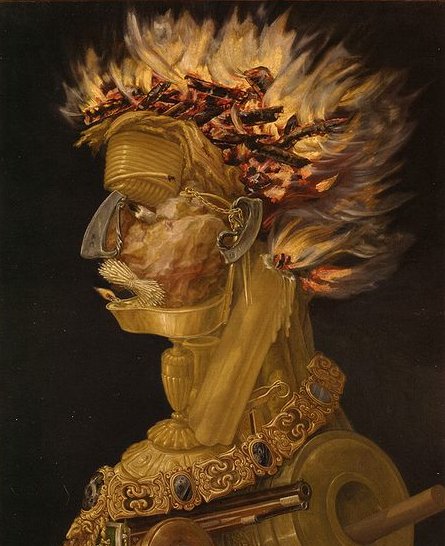Bb6.6
Fresh water streamed out from the Situla of Aquarius
and its destination was the thirsty Mouth of the Fish
down in the southern hemisphere:

 |
 |
 |
 |
 |
 |
|
Bb6-1
(25 * 25) |
Bb6-2 |
Bb6-3
(619 + 8) |
Bb6-4 (2 * 314) |
Bb6-5 |
Bb6-6
→ 360 |
|
Febr 18 (41.4) |
19 |
20 |
21 |
22
(53) |
Terminalia (419) |
|
"Jan
8 |
9 |
10 |
11 |
12 |
13 |
|
DEC
16 (350) |
17 |
18 |
19 |
20 |
SOLSTICE |
|
Rooftop-12
(Swallow)
22h (334.8)
KAE UH (Roof) =
ο
Aquarii
(334.0),
AL KURHAH (White Spot) =
ξ
Cephei (334.4),
SADALMELIK (Lucky King) =
α
Aquarii,
AL DHANAB (The Tail) =
λ
Gruis
(334.6),
ι
Aquarii,
ν
Pegasi (334.7)
*293.0 = *334.4 - *41.4 |
ι
Pegasi (335.0),
ALNAIR (The Bright One) =
α
Gruis
(335.1),
μ
Piscis Austrini,
υ
Piscis Austrini (335.3),
WOO (Pestle) =
π
Pegasi
(335.7),
BAHAM =
θ
Pegasi (Good Luck of the Two Beasts),
τ
Piscis Austrini (335.8) |
ζ
Cephei (336.2),
λ
Cephei (336.3), -/270 Lac.
(336.7), λ Piscis Austrini (336.8) |
μ
Gruis (337.0),
ε
Cephei (337.2), 1/325 Lac. (337.3),
ANCHA (Hip) =
θ
Aquarii
(337.4),
ψ
Oct.
(337.5), α Tucanae (337.9)
*296.0 = *337.4 - *41.4 |
Al Sa'ad al
Ahbiyah-23 (Lucky Star of Hidden Things)
/
Shatabisha-25
(Comprising a Hundred Physicians)
ε
Oct. (338.1),
ρ
Aquarii
(338.2), 2/365 Lac.
(338.5),
SADACHBIA =
γ
Aquarii
(338.6),
π
Gruis (338.9) |
β/172
Lac. (339.2),
4/1100 Lac. (339.4),
π
Aquarii
(339.5)
*298.0 = *339.4 - *41.4
CASTOR (α Gemini) |
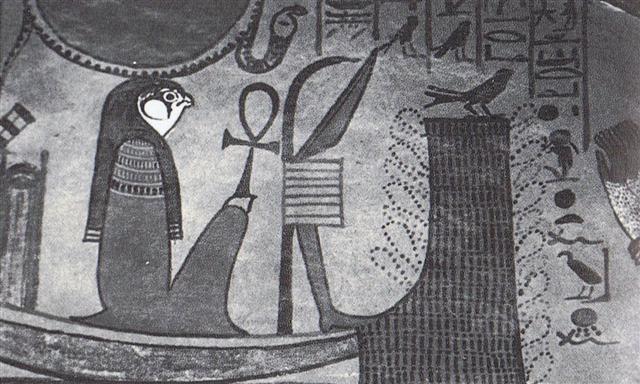
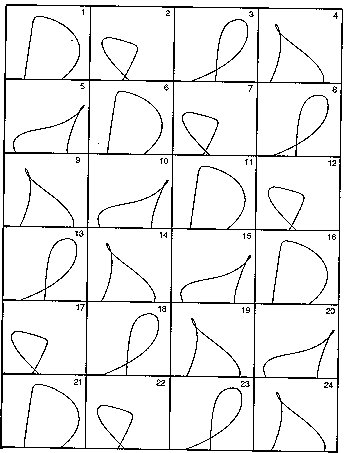
|
1900-07-08 |
1902-02-14 |
1903-09-17 |
1905-04-27 |
1906-11-30 |
|
189 = 148 + 41 |
45
→
360 / 8 |
260 = 188 + 72 |
9 * 13 ↔ 3 * 91 |
334 = 260 + 74 |
 |
 |
 |
 |
 |
|
Cancer |
Aquarius |
Virgo |
Taurus |
Sagittarius |
|
"May 28 (148) |
|
13
Ahaw 3 Kumk'u |
|
"Oct 25 (293) |
|
146 = 366 - 220 = 2 * 73 →
Sept 30 (273 = 3 * 91 = 9 *
13 + 12 * 13)
→
334 - 61 |
|
... Ira left [for Hiva, for
Maori, i ōho ai a Ira.ki
hiva.ki maori] on the
twenty-fifth day of the
month of October ('Tangaroa
Uri') ... [E:86] |
|
|
υ² Hydrae (151.8) |
Al Jabhah-8
(Forehead) /
Maghā-10
(Bountiful) /
Sharru-14 (King)
10h (152.2)
AL JABHAH =
η
Leonis (152.4),
REGULUS (Little KIng) =
α
Leonis
(152.7)
*111.0 = *152.4 - *41.4 |
λ Hydrae (153.2) |
ADHAFERA = ζ
Leonis,
TANIA BOREALIS (Northern Gazelle) = λ
Ursae Majoris, SIMIRAM = ω Carinae
(154.7) |
ALGIEBA (The Mane)
=
γ
Leonis,
q Carinae (155.5) |
TANIA AUSTRALIS (Southern Gazelle) =
μ
Ursae Majoris
(156.0),
GHOST OF JUPITER = NGC3242 Hydrae
(156.8) |
.jpg) |
|
Aug
19 (231) |
20 |
21 |
22 |
23 |
24 (8
* 29½) |
|
"July
9 (190) |
10 |
11 |
12 |
13 |
14
(195) |
|
JUNE
16 |
17 |
18 |
19 |
20 |
SOLSTICE |
... The four males and the four
females were couples in consequence of their lower, i.e.
of their sexual parts. The four males were man and
woman, and the four females were woman and man. In the
case of the males it was the man, and in the case of the
females it was the woman, who played the dominant role.
They coupled and became pregnant each in him or herself,
and so produced their offspring. But in the fullness of
time an obscure instinct led the eldest of them towards
the anthill which had been occupied by the Nummo. He
wore on his head a head-dress and to protect him from
the sun, the wooden bowl he used for his food. He put
his two feet into the opening of the anthill, that is of
the earth's womb, and sank in slowly as if for a
parturition a tergo. The whole of him thus
entered into the earth, and his head itself disappeared.
But he left on the ground, as evidence of his passage
into that world, the bowl which had caught on the edges
of the opening. All that remained on the anthill was the
round wooden bowl, still bearing traces of the food and
the finger-prints of its vanished owner, symbol of his
body and of his human nature, as, in the animal world,
is the skin which a reptile has shed ...
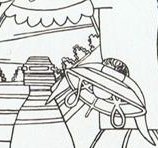
 |
 |
 |
 |
 |
 |
 |
|
Bb6-7 (631) |
Bb6-8 |
Bb6-9 |
Bb6-10 |
Bb6-11 |
Bb6-12 |
Bb6-13 (216) |
|
Febr 24 (420) |
25 |
26 |
27 |
28 (59) |
|
|
|
"Jan 14 |
15 |
16 |
17 |
18 |
19 (384 = 8 *
48) |
20 |
|
DEC 22 (356) |
23 |
24 |
25 |
26 (360) |
27 (19 * 19) |
28 |
|
δ Tucanae (340.1), ρ Cephei (340.2), ν Gruis
(340.3),
ζ Aquarii, δ Gruis (340.4), 5/1100 Lac. (340.7), σ Aquarii, 6/650 Lac. (340.9)
*299.0 = *340.4 - *41.4
PROCYON (α Canis Minoris) |
υ
Oct. (341.0),
α/91
Lac. (341.1),
HOMAN (Hero) =
ζ
Pegasi,
β
Piscis Austrini (341.2),
ν
Tucanae (341.5),
υ
Aquarii
(341.9) |
η
Aquarii
(342.1),
σ
Gruis (342.4),
SITULA (Water-jar) =
κ
Aquarii
(342.7)
*301.0 = *342.4 - *41.4 |
ε Piscis Austrini (343.5), ο Pegasi, β Gruis
(343.8 |
ρ Gruis (344.0),
MATAR (Rain) = η Pegasi
(344.2), η Gruis (344.6), β Oct. (344.7) |
λ Pegasi (345.0), ξ Pegasi (345.1), ε Gruis
(345.3), τ Aquarii (345.7), ξ Oct. (345.8), μ
Pegasi (345.9) |
ι Cephei (346.0), λ Aquarii, γ Piscis Austrini,
σ Pegasi (346.5) |
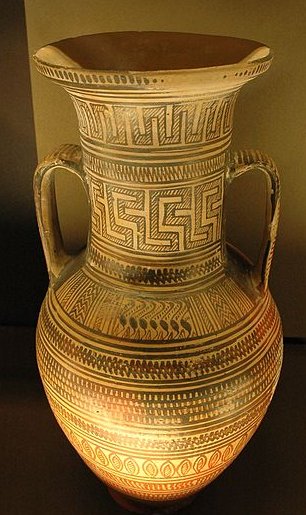
 |
348 = 12
* 29 |
 |
 |
 |
|
Ba7-35 (286) |
Bb6-11 (635) |
Bb6-12 (286 +
350) |
Ca14-23 (286 + 100) |
|
March 16
(*360) |
Febr 28
(59) |
*345 |
April 10
(100, *20) |
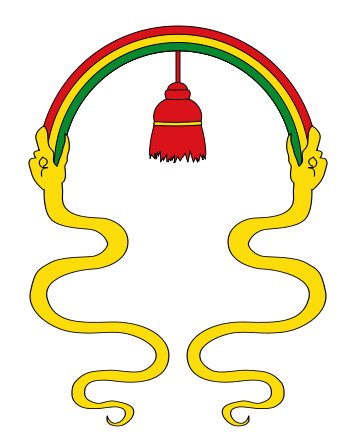 |
|
Extended Net-26b (Ox)
μ
Hydrae
(157.1) |
Maru-sha-arkat-Sharru-15 (4th Son behind the
King)
SHIR (Possessing Luminous Rays) =
ρ
Leonis
(158.9) |
p Carinae (159.3) |
φ Hydrae (160.3) |
No star listed (161 →
φ) |
VATHORZ POSTERIOR = θ Carinae
(162.1),
PEREGRINI = μ Velorum,
η Carinae
(162.6) |
ν Hydrae (163.1) |
|
Aug 25 |
26 |
27 |
28 (240) |
29 |
30 |
31 |
|
"July 15
(196) |
16 |
17 |
18 (199) |
19 |
20 |
21 |
|
JUNE 22 |
23 |
ST JOHN |
25 |
26 (6 * 29½) |
27 |
28 |

... The Pythagoreans make Phaeton fall into
Eridanus, burning part of its water, and glowing still
at the time when the Argonauts passed by. Ovid stated
that since the fall the Nile hides its sources. Rigveda
9.73.3 says that the Great Varuna has hidden the ocean.
The Mahabharata tells in its own style why the 'heavenly
Ganga' had to be brought down. At the end of the Golden
Age (Krita Yuga) a class of Asura who had
fought against the 'gods' hid themselves in the ocean
where the gods could not reach them, and planned to
overthrow the government. So the gods implored
Agastya (Canopus, alpha Carinae =
Eridu) for help. The great Rishi
did as he was bidden, drank up the water of the ocean,
and thus laid bare the enemies, who were then slain by
the gods. But now, there was no ocean anymore! Implored
by the gods to fill the sea again, the Holy One replied:
'That water in sooth hath been digested by me. Some
other expedient, therefore, must be thought of by you,
if ye desire to make endeavour to fill the ocean
... |
Metoro stated
matagi (wind) at the place where presumbably the
stars and sun calendar dates had been fixed together in
parallel, viz. at heliacal Situla.
... The Symplegades ... or
Clashing Rocks, also known as the Cyanean Rocks,
were, according to Greek mythology, a pair of rocks at
the Bosphorus that clashed together randomly. They were
defeated by Jason and the Argonauts, who would have been
lost and killed by the rocks except for Phineus' advice.
Jason let a dove fly between the rocks; it lost only its
tail feathers. The Argonauts rowed mightily to get
through and lost only part of the stern ornament. After
that, the Symplegades stopped moving permanently ... The
Argonauts, with the Golden Fleece on board, had to pass
the Symplegades, the clashing rocks. Once a ship with
its crew came through unharmed - so the 'blessed ones' (makaroi)
had decided long ago - the Symplegades would stay fixed,
and be clashing rocks no longer. After that 'accepting
the novel laws of the fixed earth', they should 'offer
an easy passage to all ships, once they had learnt
defeat'. This is only one station on the long
'opening travel' of the Argonauts transporting the
Golden Fleece (of a ram), undertaken in all probability
to introduce the Age of Aries, but it demonstrates best
the relevant point, namely, 'the novel laws' ...
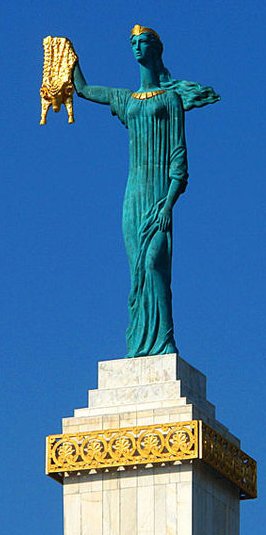
When north of the equator the
refreshing winter rains were ruling it was a very dry (maro)
season down on Easter Island.
Maro was their name
for June. Here the winds were driving the waters away and making the
ground very dry and hard, infertile and dead.
Metoro said maro consistently at such hanging
feather strings which were used together with
the
dry hipu
signs in the B text.
 |
 |
|
Nov 18 (322) |
toa |
From Manuscript E [E:91]
we have learned that it was the task of Nuku Kehu
to pound the staffs with feather garlands into the
ground to mark the boundary of the king.
... It was 4 August 1968, and it was
the feast day of Saint Dominic, patron of Santo Domingo
Pueblo, southwest of Santa Fe. At one end of the hot,
dusty plaza, a Dominican priest watched nervously as
several hundred dancers arranged in two long rows
pounded the earth with their moccasined feet as a
mighty, collective prayer [ui] for rain,
accompanied by the powerful baritone singing of a chorus
and the beat of drums. As my family and I viewed this,
the largest and in some ways the most impressive Native
American public ceremony, a tiny cloud over the Jémez
Mountains to the northwest got larger and larger,
eventually filling up the sky; at last the storm broke,
and the sky was crisscrossed by lightning and the pueblo
resounded with peals of rolling thunder ...
 |
 |
 |
 |
 |
 |
 |
 |
|
Bb5-26 |
Bb5-27 |
Bb5-28 |
Bb5-29 (192) |
Bb5-30 |
Bb5-31 |
Bb5-32 (616) |
Bb5-33 |
|
mai tae oho te
tagata - ki to maro - e tagata ui ki to
maitaki |
ihe tamaiti |
kua hua koia |
e kua oho te rima -
ki te vai - ko te vai kua oho ki te mea
maú |
ko te tagata
kua oho - ki te huaga o te poporo |
e ariki ra
|
|
Ui.
To ask. Vanaga.
Û'i.
To look, to look at (ki);
e-û'i koe! look out! Vanaga.
Ui.
1. Question, to interrogate, to ask (ue).
Uiui,
to ask questions. 2. To spy, to inspect,
to look at, to perceive;
tagata ui,
visitor. Churchill.
Tama.
1. Shoot (of plant), tama
miro, tree shoot; tama tôa,
shoot of sugarcane. 2. Poles, sticks,
rods of a frame. 3. Sun rays. 4. Group
of people travelling in formation. 5. To
listen attentively (with ear, tariga,
as subject, e.g. he tama te tariga);
e-tama rivariva tokorua tariga ki
taaku kî, listen carefully to my
words. Tamahahine, female.
Tamahine (= tamahahine),
female, when speaking of chickens:
moa tamahine, hen. Tamâroa,
male. Vanaga. 1. Child. P Pau.: tama
riki, child. Mgv.: tama, son,
daughter, applied at any age. Mq.:
tama, son, child, young of animals.
Ta.: tama, child. Tamaahine
(tama 1 - ahine),
daughter, female. Tamaiti, child
P Mq.: temeiti, temeii,
young person. Ta.: tamaiti,
child. Tamaroa, boy, male. P
Mgv.: tamaroa, boy, man, male.
Mq.: tamaóa, boy. Ta.: tamaroa,
id. 2. To align. Churchill. In the
Polynesian this [tama na, father
in the Efaté language] is distinguished
from táma child by the accent
tamā or
by the addition of a final syllable
which automatically secures the same
incidence of the accent, tamái,
tamana
... Churchill 2.
Iti. Little,
small, medium; iti atu, less;
iti no, small quantity, rare; no
iti, superficial. Itia,
shrunken. Itiiti, scanty, slim;
hare itiiti no, cabin; itiiti
noa, mediocre, mediocricity.
Hakaiti, to make small, to lessen,
to weaken, to impoverish, to thin out,
to reduced, to diminish, to retrench, to
curtail, to subdue, to mitigate, to
abate. Hakaitiiti, to squat, to
croach. P Mgv.: iti, small. Mq.:
iti, id. Ta.: iti, id.
Churchill.
Hua. 1. Testicle.
2. Figuratively: son, hua tahi,
only son; fruits of the earth; to grow
well (of fruits). 3. To cause a fight, a
quarrel. Hua-ai, generation, as
lineage of direct descendents;
contemporaries. Huahua, coccyx of
bird, 'parson's nose': huahua
moa, huahua uha. Huataru,
a creeper (Chenopodium
ambiguum). Vanaga. 1. The same;
ki hua, again, to continue, to
strain, to struggle, to move, to repeat,
over and above. Mq.: hua, the
same, to return, to recommence. 2. To
bloom, to sprout; flower, fruit (huaa);
huaa tae oko, huaa vahio,
young fruit; hua atahi, only son;
huahaga, fruit; mei te huahaga
o tokoe kopu, the fruit of thy body;
tikea huahaga, deceptive
appearance. P Pau.: ua, to be
born; huahaga, lineage. Mgv.:
hua, to produce (said of trees,
grain, etc.), blooming time of flowers,
abundance of fruit. Mq.: hua, to
produce, to bear fruit. Ta.: ua,
to sprout. Huahua. 1. Tailless
fowl. 2. Vein, tendon, line. 3. Mgv.:
huahua, pimples covering the face.
Ta.: huahua, id. Mq.: hua,
tubercules. Sa.: fuafua, abscess
on hand or feet. Ma.: huahua,
small pimples. Pau.: Hua-gakau,
rupture. Ta.: áau, entrails. Sa.:
ga'au, id. Ma.: ngakau,
id. Churchill. 1. Fruit. 2. Egg. 3. Tā
hua = 'genealogical writing' or
'same writing'. Fischer.
Ma'u. 1. To
carry, to transport; he-ma'u-mai,
to bring; he-ma'u-atu, to remove,
ma'u tako'a, to take away with
oneself; te tagata hau-ha'a i raro,
ina ekó ma'u-tako'a i te hauha'a o te
kaiga nei ana mate; bienes
terrenales cuando muere
→ a
rich man in this world world cannot take
his earthly belongings with him when he
dies. 2. To fasten, to hold something
fast, to be firm; ku ma'u-á te veo,
the nail holds fast. 3. To contain, to
hold back; kai ma'u te tagi i roto,
he could not hold his tears back.
Vanaga. |
|
Febr
3 |
4 (4 * 100) |
5 |
6 |
7 |
8 |
9
(40) |
10 |
|
...
On February 9 the Chorti Ah K'in,
'diviners', begin the agricultural year.
Both the 260-day cycle and the solar
year are used in setting dates for
religious and agricultural ceremonies,
especially when those rituals fall at
the same time in both calendars. The
ceremony begins when the diviners go to
a sacred spring where they choose five
stones with the proper shape and color.
These stones will mark the five
positions of the sacred cosmogram
created by the ritual. When the stones
are brought back to the ceremonial
house, two diviners start the ritual by
placing the stones on a table in a
careful pattern that reproduces the
schematic of the universe. At the same
time, helpers under the table replace
last year's diagram with the new one.
They believe that by placing the cosmic
diagram under the base of God at the
center of the world they demonstrate
that God dominates the universe. The
priests place the stones in a very
particular order. First the stone that
corresponds to the sun in the eastern,
sunrise position of summer solstice is
set down; then the stone corresponding
to the western, sunset position of the
same solstice. This is followed by
stones representing the western, sunset
position of the winter solstice, then
its eastern, sunrise position. Together
these four stones form a square. They
sit at the four corners of the square
just as we saw in the Creation story
from the Classic period and in the Popol
Vuh. Finally, the center stone is placed
to form the ancient five-point sign
modern researchers called the quincunx
...
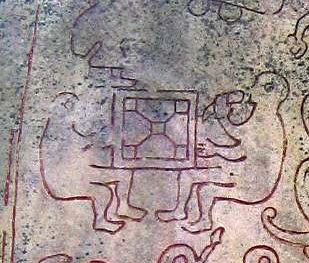 |
|
DEC 1 |
2 (4
* 84) |
3 |
4 |
5 |
6 |
7 |
8 |
|
21h (319.6)
ARMUS = η Capricorni
(319.0),
DORSUM =
θ
Capricorni
(319.3),
TSOO = 24 Capricorni
(319.7) |
DRAMASA (the South Pole star) =
σ
Oct.,
χ
Capricorni (320.0),
ν
Aquarii (320.3),
γ
Equulei (320.6),
ο
Pavonis (320.8) |
α Oct. (321.5),
δ
Equulei (321.7),
φ
Capricorni (321.8) |
KITALPHA (Part of a Horse) =
α
Equulei
(322.0),
ALDERAMIN (The Right Arm) = α Cephei
(322.9) |
DAI =
ι
Capricorni
(323.5),
β
Equulei (323.8) |
γ
Pavonis (324.1),
YAN =
ζ
Capricorni
(324.6) |
Al Sa'd al
Su'ud-22 (Luckiest of the Lucky)
/
Emptiness-11 (Rat)
TSIN = 36 Capricorni
(325.2),
ALPHIRK (The Flock) =
β
Cephei
(325.7),
SADALSUD =
β
Aquarii,
ξ
Gruis (325.9) |
No star listed (326) |
|
ν Cancri (136.0),
TALITHA AUSTRALIS = κ Ursae Majoris
(136.1), ω Hydrae (136.8) |
9h (137.0)
σ¹ Ursa Majoris (137.0), κ Cancri
(137.3),
τ Cancri (137.4),
ALSUHAIL (al Wazn, of the Weight) = λ
Velorum
(137.5), σ² Ursa Majoris (137.6), τ Ursa
Majoris (137.7), ξ Cancri (137.8)
*96.0 = *137.4 - *41.4 |
κ Pyxidis (138.0), ε Pyxidis (138.5) |
π
Cancri (139.2),
MIAPLACIDUS =
β
Carinae
(139.3),
TUREIS (Little Shield) = ι Carinae
(139.8) |
No star listed (140) |
θ
Pyxidis (141.5),
MARKAB VELORUM =
κ
Velorum
(141.5),
AL MINHAR AL ASAD (The Nose of the Lion)
=
κ
Leonis
(141.6),
λ
Pyxidis (141.9) |
Star-25 (Horse)
/
ANA-HEU-HEU-PO-5
(Pillar where debates were held)
ALPHARD (The Horse) =
α
Hydrae
(142.3),
ω
Leonis (142.6),
τ¹
Hydrae (142.7) |
Al Tarf-7 (The
End)
ψ
Velorum (143.3),
ALTERF =
λ
Leonis,
τ²
Hydrae (143.4),
ξ
Leonis (143.5)
*102.0 = *143.4 - *41.4 |
|
Aug 4 (216) |
5 |
6 |
7 |
8 |
9 |
10
(222) |
11 |
|
→ St
John |
"June 25 |
26
(177) |
27 |
28 |
29
(180) |
30 |
"July
1 |
Although Metoro said matagi (wind) after
Terminalia (cfr Bb6-7--9) the designs of these glyphs seem
to indicate a downpour.
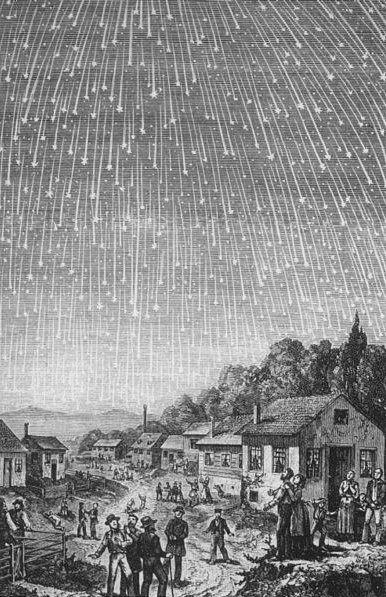
|






.jpg)













